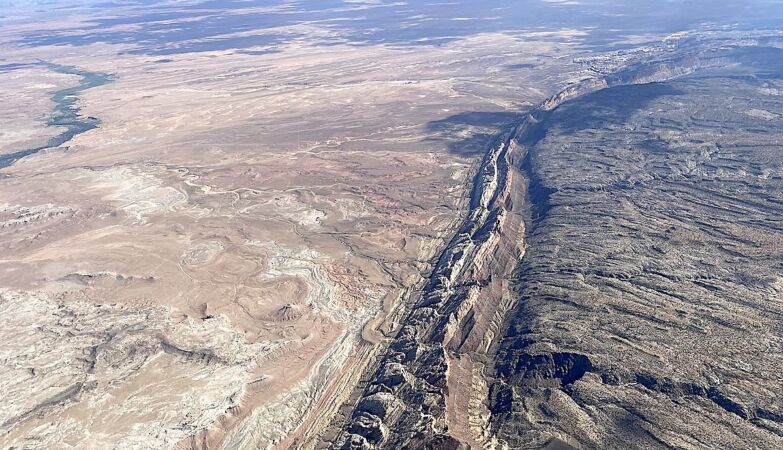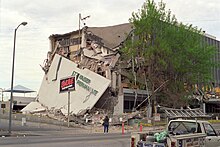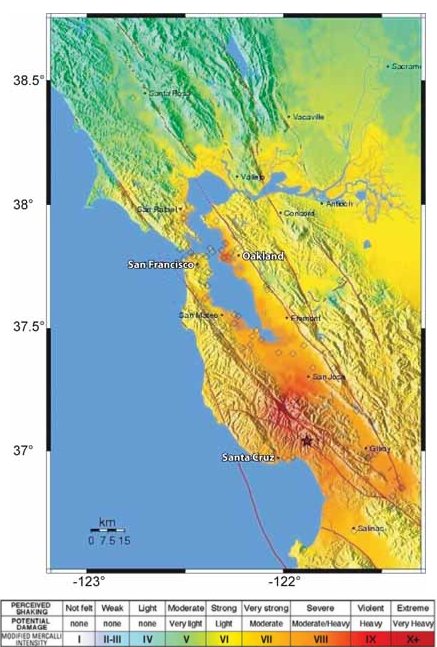Sismólogos suspeitam que terramoto na falha de San Andreas está iminente

Falha de San Andreas, na Califórnia
Um novo estudo conduzido por sismólogos italianos e norte-americanos sugere que uma parte da Falha de San Andreas, em Parkfield, na Califórnia, não está a dar sinais que sugiram que um terramoto vai ocorrer em breve - mas afirmam que há fatores que sugerem o contrário.
Apesar de haver “parâmetros atenuantes invulgares”, os sismólogos Luca Malagnini, do Istituto Nazionale di Geofisica e Vulcanologia, em Itália, e Robert Nadeau e Tom Parsons, da Universidade da Califórnia, suspeitam que um terramoto na Falha de San Andreas pode estar iminente.
As suspeitas dos três sismólogos são apresentadas num artigo científico recentemente publicado na revista Frontiers in Earth Science.
A parte da Falha de San Andreas situada perto de Parkfield, na Califórnia, oferece aos cientistas que estudam os terramotos uma oportunidade única: a norte de Parkfield, duas grandes placas deslocam-se uma contra a outra a um ritmo constante. A sul de Parkfield, por outro lado, a falha está bloqueada.
Esta circunstância, explica o Phys, leva a que os terramotos ocorram com um padrão: aproximadamente a cada 22 anos, e permite aos investigadores recolher dados sísmicos antes, durante e depois de um terramoto.
Esses terramotos também têm quase sempre a mesma magnitude, cerca de 6 na Escala de Richter, ou ligeiramente superior.
O último terramoto que ocorreu no local foi em 2004, o que sugere que deverá ocorrer um terramoto nos próximos dois anos. Mas há um problema – a atividade sísmica relacionada com a falha não indica quaisquer sinais de um terramoto.
Normalmente, observam os autores do estudo, as ondas de baixa frequência atenuam-se antes de um terramoto, enquanto as ondas de alta frequência aumentam. Mas, neste momento, não há sinais de nenhum destes fenómenos.
Os investigadores salientam que o último terramoto que aconteceu na área ocorreu com um atraso com cerca de 14 anos de atraso.
Este atraso, no entanto, deveu-se essencialmente ao facto de outros sismos terem ocorrido suficientemente perto para aliviar a pressão sobre Parkfield - o que não é o caso desta vez.
Os três sismólogos acreditam que a pressão tectónica em zonas próximas da falha poder provocar brevemente um terramoto, mas com um epicentro algo deslocado.
Os investigadores não têm porém confiança absoluta nas suas leituras, pelo que optaram por não apresentar previsões formais. Em vez disso, sugerem que, como é sempre o caso com os terramotos, esperemos para ver o que acontece.
Felizmente, “esperar para ver o que acontece” não é neste caso um grande problema. Ao contrário da densamente povoada região de São Francisco, a cidade inquieta que está sempre à espera do “Big One”, quase ninguém vive em Parkfield.
in ZAP












